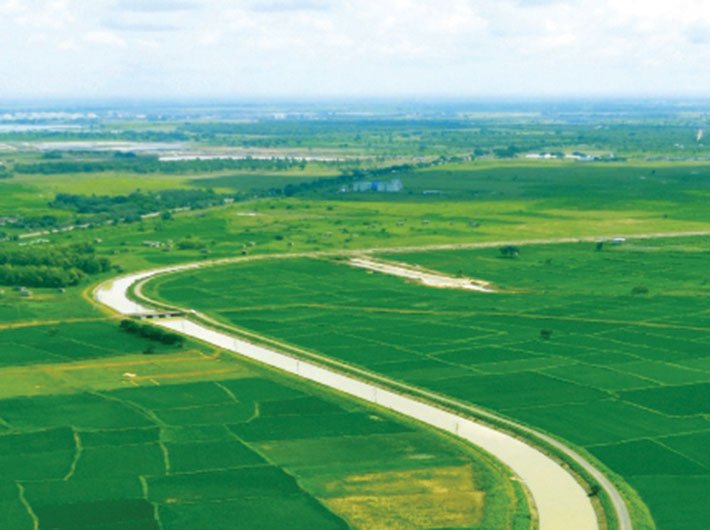The first smart city coming up at a cost of '40,000 crore will house 6 lakh people by 2031
A city with wide and clean roads, reliable public transport, spacious sidewalks, uninterrupted power and water supply, a network of surveillance cameras, free Wi-Fi connectivity and a command and control centre for real-time monitoring. That may sound like a real-estate advertisement, but it is not. That is how the Chhattisgarh government describes its upcoming greenfield city adjacent to the capital, Raipur, and will become its new capital. The state claims it will be India’s first smart city – with judicious blend of urban design, sound infrastructure and ICT.
The greenfield city, expected to attract investments worth '40,000 crore, will house six lakh people by 2031, according to a senior official of the Naya Raipur development authority (NRDA). Of the anticipated aggregate investment, Rs6,000 crore will come from the state government. The city plan has been prepared by a consortium of Delhi-based Consultancy Engineering Services (CES) and Singapore-based PWG.
The keywords for the proposed city are sustainability and inclusiveness. The land use in Naya Raipur is one of best in the country, says the official. Close to 26 percent of the land will have green vegetation cover and it would also include three lakes and a jungle safari. Another 26 percent of the land will be used for residential area, 23 percent for public and semi-public purposes and the rest for transport, commercial and industrial use. Based on the transit-oriented development (TOD) concept, the city roads are 100 metre wide and the public transportation is based on bus rapid transport system (BRTS).
Architecturally, the city follows gridiron pattern of urban planning in which the streets run perpendicular to each other forming a grid. Also seen in the design of streets in Harappa and Mohenjodaro civilisation, the street pattern is pedestrian friendly. The city has three long spine roads on the north-south axis.
The city is being readied in three phases, or layers as NRDA calls them, covering a total area of 8,013 hectare or 75 sq km. In phase one, most of the core city structures will be put in place. This includes 75 km of road network, all government buildings, including the capitol complex which will house the secretariat and the legislative assembly, residential sectors, hospitals, central business districts (CBD), a five-star hotel, a cricket stadium and a knowledge park housing educational research institutions. This phase has been virtually completed. The secretariat has already shifted from Raipur. The second phase will witness development of periphery zone, which has been mostly left green. In the last phase the NRDA is expected to develop the airport zone.
The ICT component of the smart city project is estimated to cost '1,500 crore. It has several modules. “To start with, the city will have its own dedicated fibre network connecting all government offices. It will also connect all tools and sensors fitted to roads, water and electricity pipes, among others. A few selected areas will be made Wi-Fi zones. Moreover, the city network will be capable of providing high-speed internet bandwidth to all its citizens,” says Rakesh Kaul, executive director, PricewaterhouseCoopers Ltd, which has been appointed as consultant for the Naya Raipur smart city project.
The service delivery will be made electronic. From utility applications to, welfare scheme management, grievance management building permission management, city asset management, land and estate management system, all this will be managed through the internet. The utility functions – electricity distribution, water distribution and sewerage systems – will be managed by SCADA, a software which helps in running industrial setups.
The city will have proper lighting facility. This will include roads, public areas and landscape. An intelligent street lights system has already been implemented. The light will be dim when the car density on the road is low and vice versa. The traffic management will be automatic. Based on real-time traffic data, the software will reroute traffic. It will rationalise green time at every traffic junction. The roads will be mounted with display boards which will flash messages about traffic and matters of residents’ interest.
All this will be networked to a central command and control centre, which will be a single point of contact for citizens in case of emergencies, says Kaul. “The city monitoring will happen from this place only. Surveillance of the city, traffic management, handling emergency situations, etc., will be done from the centre. It will have various analytics and predictive tools deployed that will help the city administration,” he adds.
The state government will create a department within NRDA to manage the smart city. It also plans to bring a legislation to devise a framework for coordinated functioning of various agencies. “It will define the ICT tools that will be used by various agencies to perform their functions relating to city management,” says Kaul. The city legislation will include provisions related to sharing of data among various agencies, process of using common applications by these agencies, procedural changes in the established processes to make the city sustainable.
This story first appeared in Magazine Vol 05 Issue 16 (16-30 Sept 2014)

